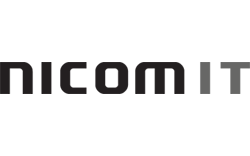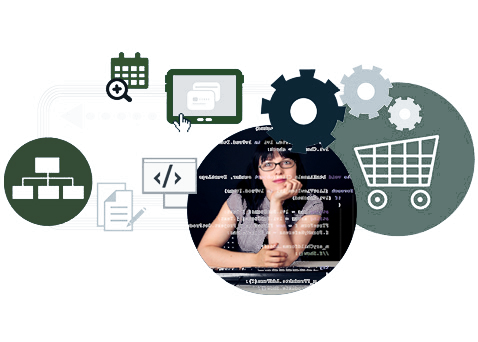Some of you might remember the commercial about “two mints in one.”
Windows 8 is a bit similar in that it is two operating systems in one, the traditional mouse and keyboard operating system and a new touch-enabled operating system.
Windows 8 has not been released yet and Microsoft isn’t saying when it will be available but we’ve seen enough pre-releases at Nicom to start having a pretty good idea of what it will look like.
And what it will look like is — different.
Its primary interface consists of tiles, which are large icons that can be organized in any way and, when tapped, do things like load up applications or websites.
These tiles may also display content that changes depending on what’s going on in the background. For example, a tile might exist for loading up a weather forecast when you tap on it. But even without tapping, it can display the current temperature, with a relevant picture such as a sun or clouds.
This type of display is called the “Metro Interface” and applications will now have “Metro” versions, where the applications can run full-screen or use part of the display, in such a way that they will render properly on many types of devices.
These pieces can all be moved around, expanded and shrunk. If you’re used to using gestures on a tablet or iPhone, this will come quite naturally. And browsing the Internet via the built-in browser can be entirely touch-based. You can also pop up a virtual keyboard that will occupy part of the screen.
This means that a whole new suite of Windows applications will be coming out in a Metro style, including traditional ones like Word and Excel. To make use of this new interface, you will, of course, need a touch-enabled computer. These are becoming more and more popular. If you are a software developer, there will be a kit for building such applications.
On the extreme right side of the screen are “Charms,” little icons that you can swipe into view to make your computer do things like searching or changing device settings. These essentially render the task bar non-essential, so it is absent in the Metro view.
Windows 8 is also designed to work on non-touch PCs, where you can switch over to the traditional interface. One of Microsoft’s goals is to make sure anything that worked on Windows 7 will also run on Windows 8, only faster.
Trade reviews have generally been positive, but it does have its detractors. One complaint is that Microsoft is trying to do too many things within one operating system and the classic interface suffers because so much emphasis is being placed on the touch-based interface.
This leads to questions being raised as to its adoption as a replacement for Windows 7.
Keep in mind, however, that the product isn’t finished yet. And there appears to be a method in their madness. Where Microsoft seems to be headed is to have one operating system that will work on any type of device: desktop, laptop, tablet and phone.
Nobody that we know of — not even Apple — does that. Microsoft is also coming out with a Windows Server 8, which is targeted at cloud computing from the server side of things.
What I am shopping for now is a new type of computer that can run like a tablet or convert to a laptop and make use of a pen-type stylus so I can take notes. I currently do that using Microsoft’s OneNote application on a pen-based computer. To date, I haven’t been compelled to switch to something new.
The key thing for me is I only want one device. I’ve long ago dispensed of my desktop PC and once I move to tablets, I want to also be able to do away with my pen-based laptop. I had been thinking that to do so I would need to have all my applications on the cloud, but Windows 8 offers tantalizing new possibilities.
There’s probably such devices already out there. I just need to take the time to find the right one.
Then I’ll tell you all about it.

